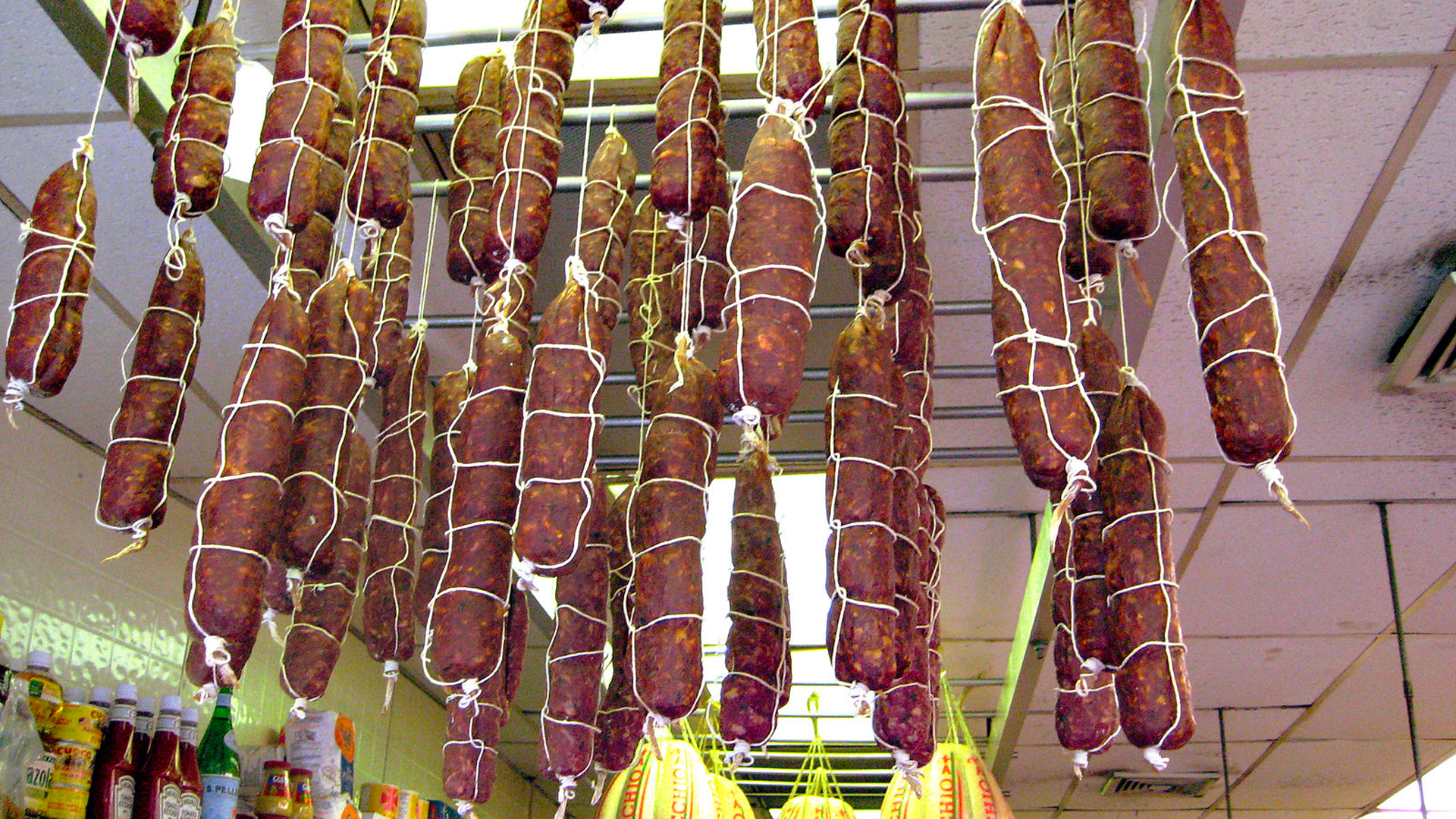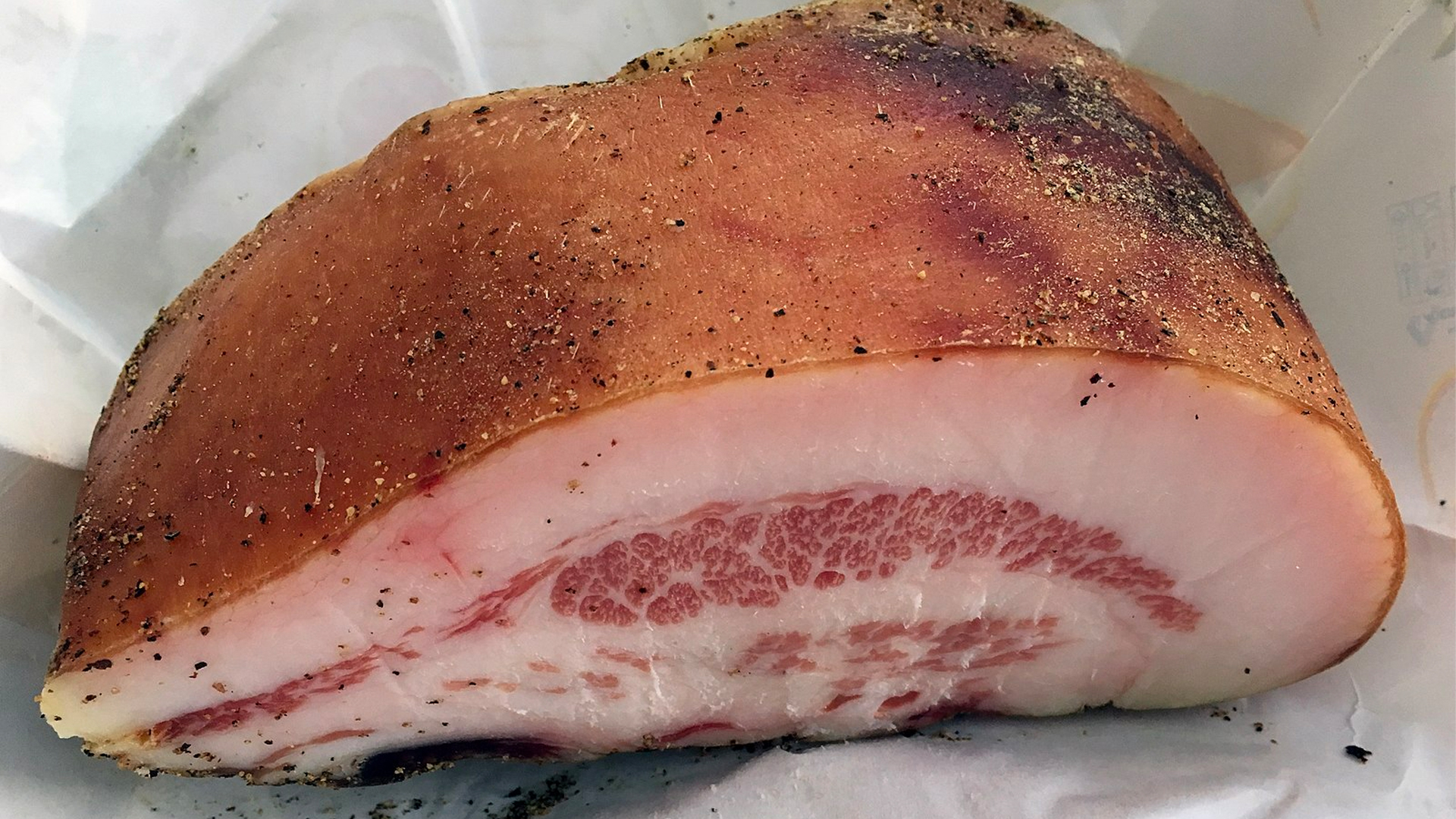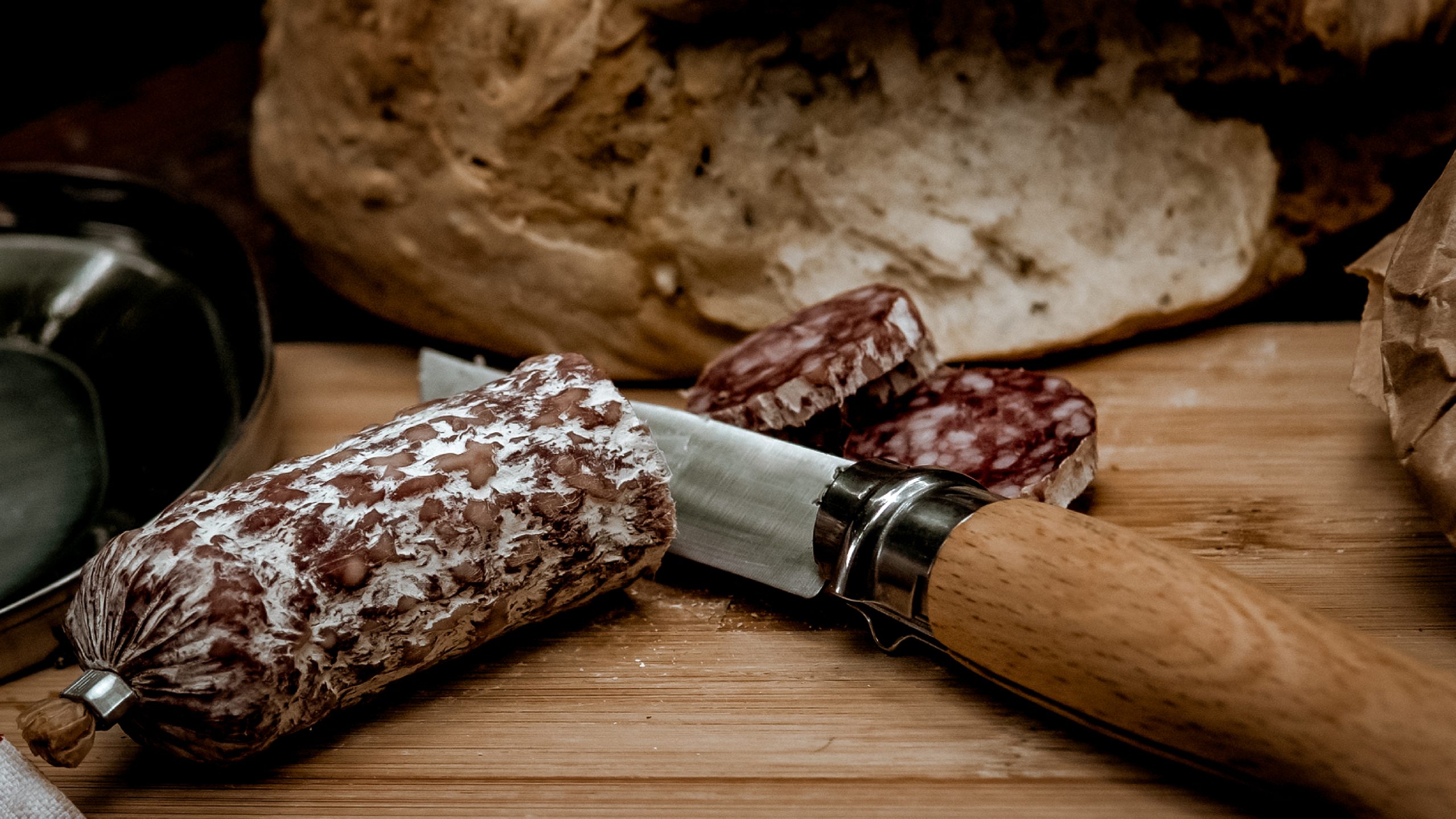If an antipasto tray is placed in front of you and your hands aren’t reaching directly for the prosciutto or soppressata…what are you doing?! While it’s almost impossible to choose from the plethora of delectable items on an antipasto platter, Italian cured meats are often the first to disappear into the hands of hungry grazers. We’re giving you the scoop on some of our favorite salumi (cured meats).
Prosciutto

Typically made from the hind leg of a pig, the best prosciutto hails from Parma in Emilia-Romagna where each leg is cured over time with only sea salt, temperature-controlled space, and a whole lot of time. While you can certainly find prosciutto from other locations, take our advice and splurge on the one from the region of Parma which holds a DOP (Denominazione di Origine Protetta). This is put in place for protection—declaring that this type of prosciutto can solely be made in Parma. The best pieces are paper thin so the salty slices can melt in your mouth.
Soppressata

Originating in the region of Calabria, soppressata is a southern Italian staple made from cuts of pork such as the shoulder that include a mix of fat and lean meat. While recipes may vary slightly, soppressata can be made spicy or sweet (think fennel seed), but is most often desired with that traditional southern kick of spice which includes some form of hot red pepper (crushed or dried), black peppercorns, and then seasoned with salt. Some choose to mix in red wine, while others prefer the flavor of a red pepper paste or a combination of both. Once the meat and all its fixings have been stuffed into casings, they are hung to dry and cure at a relatively controlled temperature over the span of 2-3 months. Finally, speckles of fat and spice can be exposed in the beautiful, thin slices of soppressata and enjoyed with some cheese, bread, or included on a sandwich.
Capocollo or Capicola

While the pronunciation of this savory deli meat is often debated, the powerful flavor profile of salt and spice is undeniable. Capocollo comes from the words capo (head) and collo (neck) and thus is made from the meat behind the pig’s head and at the top of its shoulder. There are seven different varieties whose seasonings reflect the various regions of Italy that produce them. Some choose to pour red or white wine over the meat for flavor, while it’s a unanimous vote to pack on a variety of herbs and spices before the capocollo is hung to dry and cure for about 3-6 months (depending on the temperature of the room). It can lean on the chewier side, so slice it thin and savor the flavorful meat with thin white lines of buttery fat running through it—complimenting the peppery taste perfectly!
Salami

It may be the most sought-after cold cut in the deli line, but the original salami is a type of cured sausage consisting of pork but sometimes substituted with other types of meat. It dates back to ancient Roman times and is easily recognizable by its marbled fat appearance, accompanied by hints of garlic and a selection of herbs and spices rounded out with a salty bite. Genoa and hard salami are two common variants identified by Genoa’s soft and fatty texture and hard salami’s firmer and dryer consistency.
Pancetta

Though to be the Italian sister of American bacon, pancetta is cut from the belly of the pig and nearly identical to bacon with its name deriving from the word pancia (belly). After being coated in a generous amount of salt, black pepper, paprika, and crushed red pepper, the pancetta is hung to cure and should be ready to eat in about three to four weeks. Depending on the region of Italy it comes from, the selection of desired spices can differ. It’s delicious cut thinly and paired with fresh bread or cheese, or cooked until crispy in certain pasta dishes. It happens to be a salumi that can be consumed raw or cooked and is appetizing both ways.
Guanciale

If pancetta is bacon’s sibling, guanciale is its sexy older cousin. While its looks are quite similar to pancetta, guanciale contains more fat and is known to elevate any dish with its natural salty flavor due to its incredible fat content. Its name stems from the Italian word for cheek (guancia) which indicates the cut of pork it is. Like the other salumi, it’s decorated with the usual suspects: salt, black pepper, garlic, and a preference for herbs until it's finally left to cure for a debatable 5-16 weeks; the longer it matures, the stronger the flavor. It’s mainly found in dishes native to central Italy and is the preferred and correct ingredient for the creamy pasta dish Carbonara—(if you can’t get a hold of guanciale, substitute with pancetta!)
Mortadella

The gorgeous and mouth-watering ribbons of sliced Mortadella make for the perfect addition to any Italian panino, or enjoyed on its own! While an in-depth process is involved in making it from start to finish, it consists of meat generally obtained from the shoulder and back of the pig combined with a good percentage of pure pork fat. With origins in Bologna, this silky salumi boasts a salty pork flavor and is sprinkled with accents of pistachio and the tang of black peppercorns. These specific ingredients allow it to stand out making it not your average bologna!
Making salumi like pancetta and guanciale involves a few more steps such as allowing the meat to marinate before rinsing it with wine prior to beginning the curing process. In any event, these Italian delicacies have become staple ingredients in many homes, where some families have even ventured to make them homemade!
Sarah Talarico
Sarah Talarico is a writer at heart, with a deep passion for all things Italian. Much of her writing inspiration comes from her Italian American roots that trace back to her father’s beloved hometown in Calabria. Southern Italy holds a special place in her heart, right next to homemade sauce and cappuccini. Sarah has a Bachelor’s in Creative Writing and English and a desire to use her writing skills to share the timeless charm of Italy and that ‘dolce far niente’ feeling. In her downtime, she finds joy in filling the plates and seats at her dining room table.

